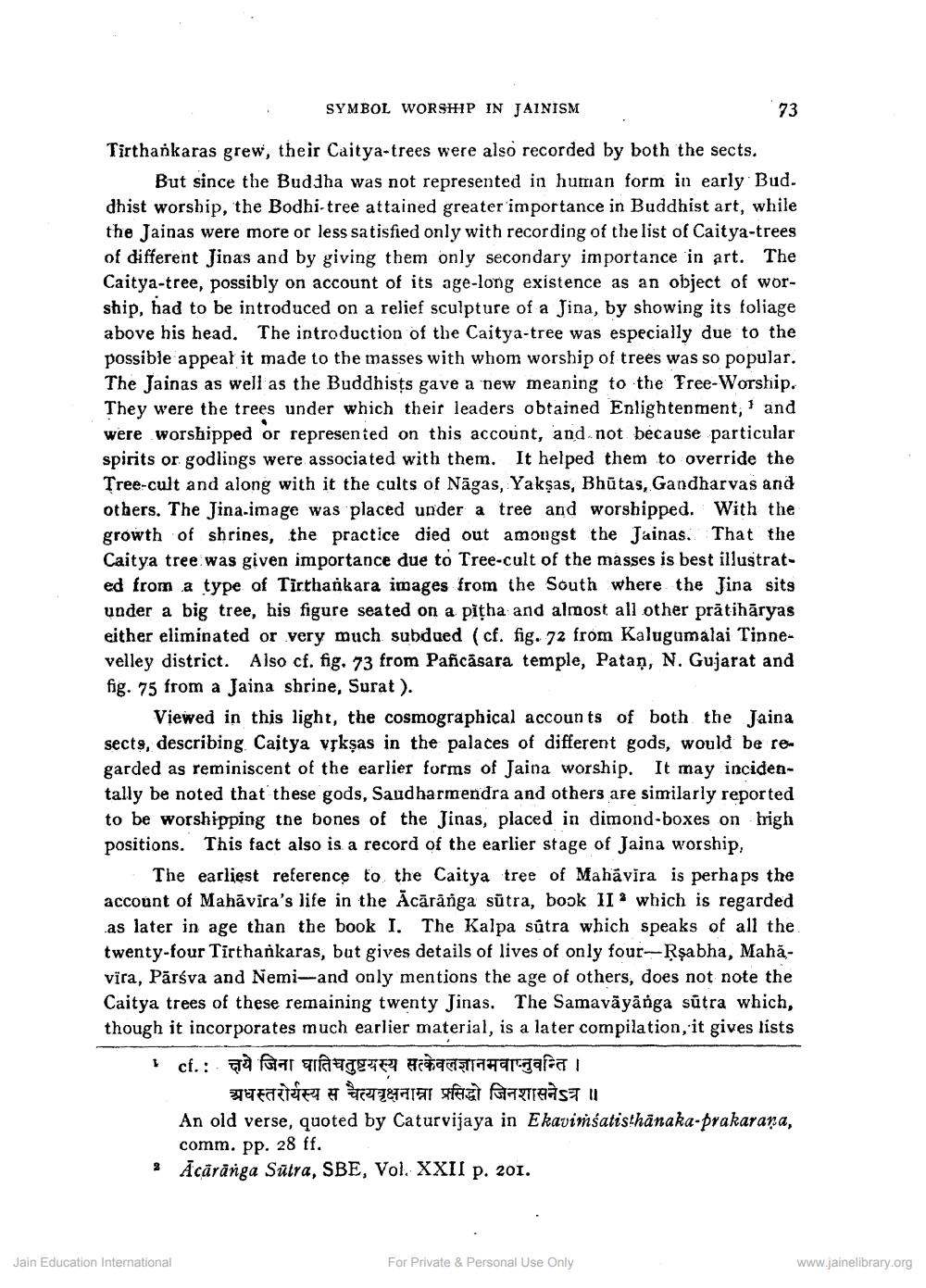________________
SYMBOL WORSHIP IN JAINISM
73
Tirthankaras grew, their Caitya-trees were also recorded by both the sects.
But since the Buddha was not represented in human form in early Bud. dhist worship, the Bodhi-tree attained greater importance in Buddhist art, while the Jainas were more or less satisfied only with recording of the list of Caitya-trees of different Jinas and by giving them only secondary importance in art. The Caitya-tree, possibly on account of its age-long existence as an object of worship, had to be introduced on a relief sculpture of a Jina, by showing its foliage above his head. The introduction of the Caitya-tree was especially due to the possible appeal it made to the masses with whom worship of trees was so popular. The Jainas as well as the Buddhists gave a new meaning to the Tree-Worship. They were the trees under which their leaders obtained Enlightenment, 1 and were worshipped or represented on this account, and not because particular spirits or godlings were associated with them. It helped them to override the Tree-cult and along with it the cults of Nāgas, Yaksas, Bhūtas, Gandharvas and others. The Jina-image was placed under a tree and worshipped. With the growth of shrines, the practice died out amongst the Jainas. That the Caitya tree was given importance due to Tree-cult of the masses is best illustrated from a type of Tirthankara images from the South where the Jina sits under a big tree, his figure seated on a pitha and almost all other prātihāryas either eliminated or very much subdued (cf. fig. 72 from Kalugumalai Tinnevelley district. Also cf. fig. 73 from Pascasara temple, Pataņ, N. Gujarat and fig. 75 from a Jaina shrine, Surat).
Viewed in this light, the cosmographical accounts of both the Jaina sects, describing Caitya vškşas in the palaces of different gods, would be rem garded as reminiscent of the earlier forms of Jaina worship. It may incidentally be noted that these gods, Saudharmendra and others are similarly reported to be worshipping the bones of the Jinas, placed in dimond-boxes on high positions. This fact also is a record of the earlier stage of Jaina worship,
The earliest reference to the Caitya tree of Mahavira is perhaps the account of Mahāvira's life in the Ācārānga sūtra, book II · which is regarded as later in age than the book I. The Kalpa sútra which speaks of all the twenty-four Tirthankaras, but gives details of lives of only four-Rşabha, Mahăvira, Pārsva and Nemi-and only mentions the age of others, does not note the Caitya trees of these remaining twenty Jinas. The Samavāyānga sūtra which, though it incorporates much earlier material, is a later compilation, it gives lists 1 cf. : i forat a TEFT C har garai
अधस्तरोर्यस्य स चैत्यवृक्षनाम्ना प्रसिद्धो जिनशासनेऽत्र । An old verse, quoted by Caturvijaya in Ekavimśatisthānaka-prakarana, comm. pp. 28 ff. Ācārānga Sūtra, SBE, Vol. XXII p. 201.
Jain Education International
For Private & Personal Use Only
www.jainelibrary.org




